The area between present-day Boráros Square and Rákóczi Bridge, bordered on one side by the Danube, and Soroksári Road on the other, showed a very mixed picture until the 1880s. Leased lands and warehouses alternated, alongside a military stable, a customs house, and a massive camp hospital, erected in the 1780s, at the end of Haller Street.
Meanwhile, the far side of Soroksári Road was lined with huge steam mills, paint factories and brick-plants. In 1872 the city-owned Public Slaughterhouse also opened along the road. These industries necessitated an increase in freight transportation. The completion of the Southern Connecting Railway Bridge in 1877, opened up the possibility of creating rail freight connections between the east and west ends of the country.
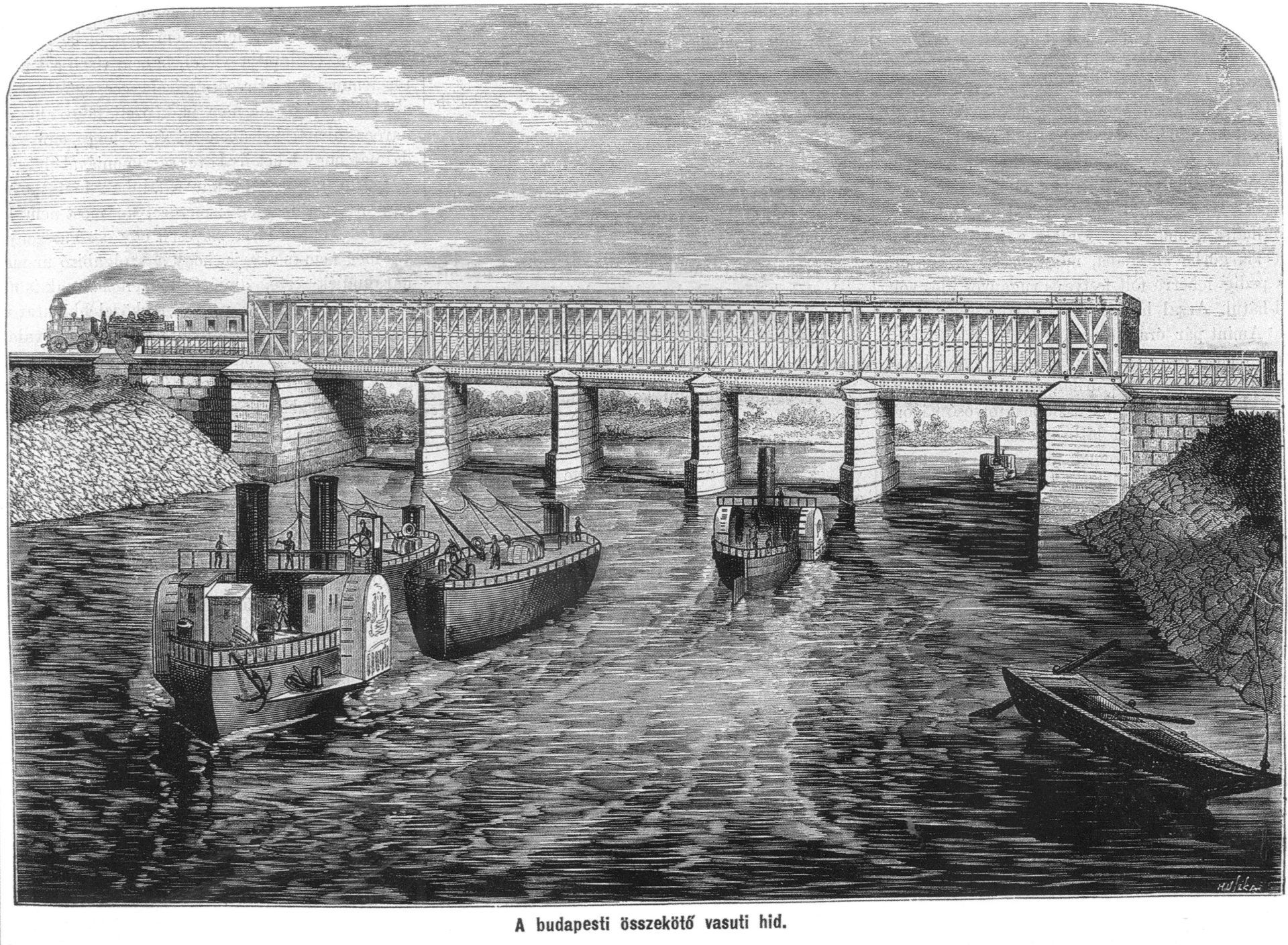
Image of the Southern Connecting Railway Bridge in the 30 April 1876 issue of Magyarország és a Nagyvilág
This was when the Ferencváros Freight Station was opened south of today's Könyves Kálmán Boulevard, which quickly became one the largest rail hubs in the country. The number of factories also continued to increase, growing beyond the capacity of even this major station. The led to the creation of a new freight station. Plans for a rail connection to the Main Customs House, completed in 1874, reinforced this demand, as a new rail junction near the bridge was already being planned.
The new logistics centre known as the Danube-bank Freight Station was opened in 1879. A total of 17 100-metre-long and 15-metre-wide warehouses were erected for storage. Two large open storage areas were designated, while loading bays running along the tracks also provided open storage. Six wooden storehouses were built on the riverbank to store through traffic goods, while they were being transferred between rail and water transport.
To facilitate the movement of goods, steam-powered cranes were installed along the loading dock. Alongside the above, an office block and several residential buildings were also constructed. A shed to house four locomotives, one large and several smaller turntables, coal storage and several smaller outbuildings were also added.
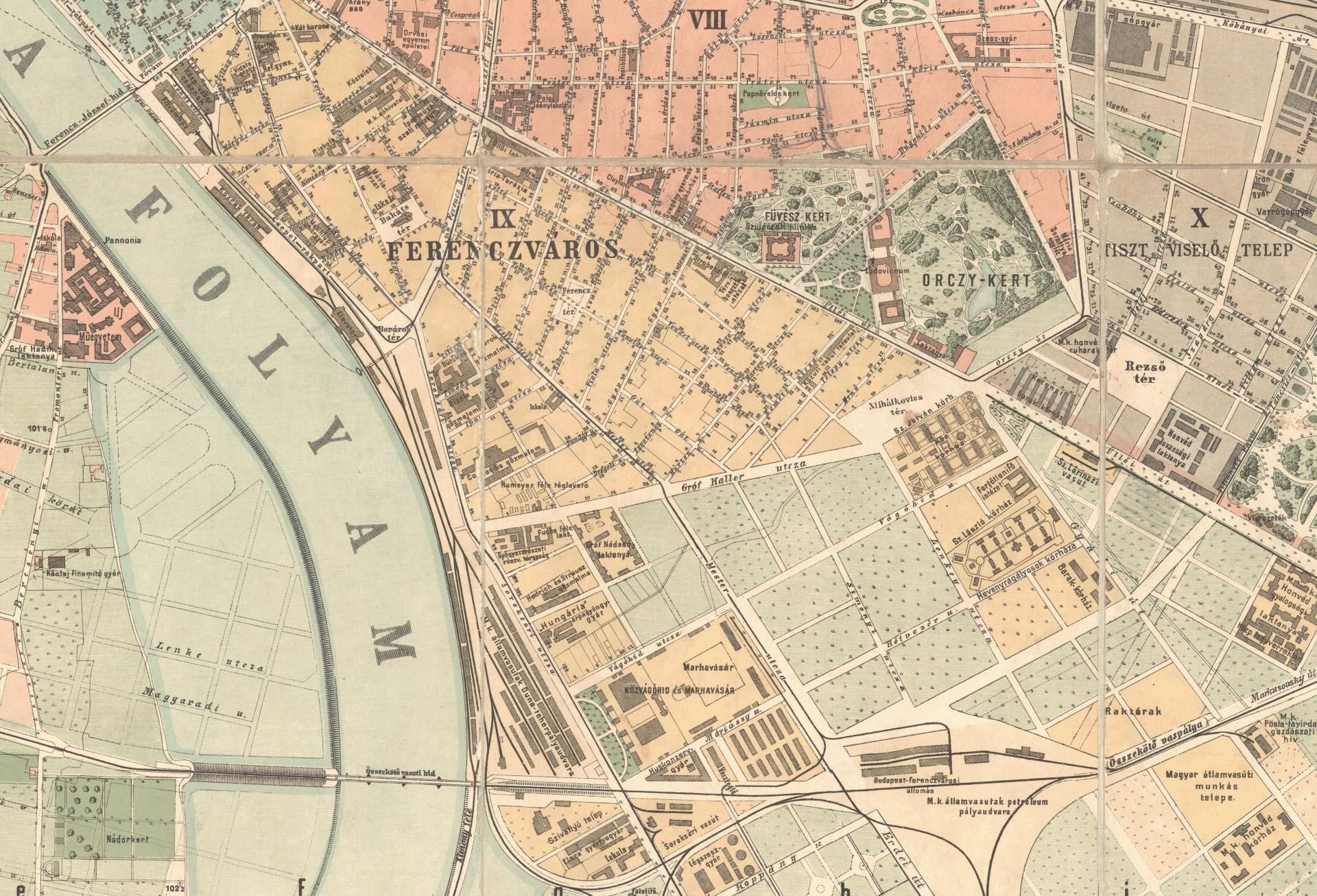 Map of Budapest from 1903. Grey rectangles indicate warehouses and MÁV buildings in the Danube-bank Freight Station
Map of Budapest from 1903. Grey rectangles indicate warehouses and MÁV buildings in the Danube-bank Freight Station
(Source: Ferencváros Local History Collection)
 Map of Budapest from 1930. Orange rectangles indicate warehouses and MÁV buildings in the Danube-bank Freight Station
Map of Budapest from 1930. Orange rectangles indicate warehouses and MÁV buildings in the Danube-bank Freight Station
(Source: Ferencváros Local History Collection)
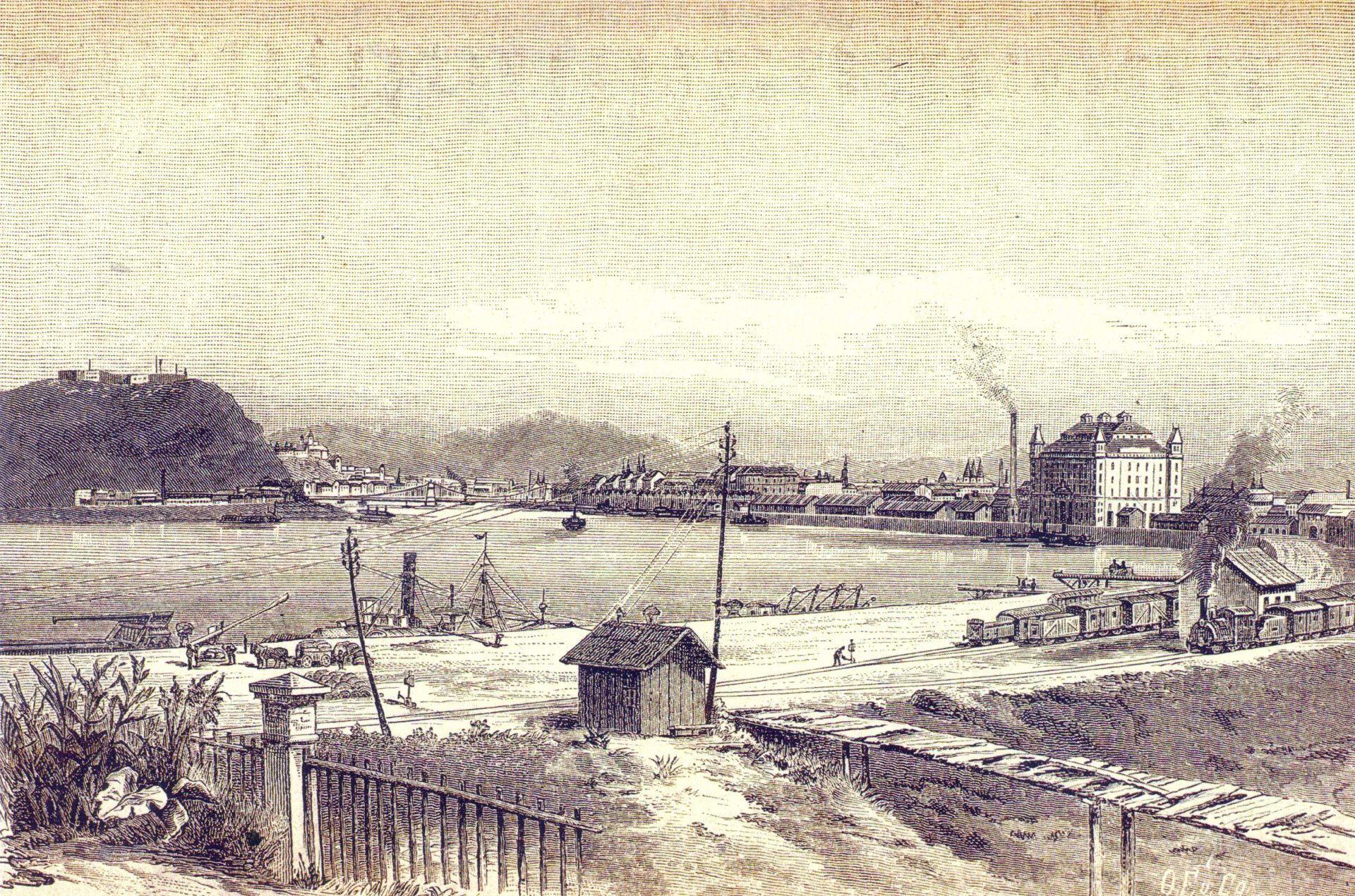 Detail of the Danube-bank Freight Station with the Elevátorház industrial building visible in the background
Detail of the Danube-bank Freight Station with the Elevátorház industrial building visible in the background
(Published in the 18 April 1885 issue of Ország-Világ)
When the Budapest Suburban Railway was created in 1894, connecting tracks were built between the Public Slaughterhouse station of the new railway and the freight station to divert the rail traffic of the factories on the southern section of Soroksári Road (such as the Arms and Machine Factory) to the terminus.
The Central Market Hall opened in 1897, in which a track connection ended in a pair of loading bays. Trains tracks also led to the Elevátorház, which was Budapest's largest granary on the northern side of Boráros Square. The freight station played a central role in the transportation of food and goods in Budapest and nationally for 70 years. In the first decade of the 20th century, about 110,000 cars moved through the terminus, accounting for 900,000 tonnes.
Several hundred workers operated the train station. Local MÁV employees even created a cultural club and set up a library in one of the buildings. Even the relatives of some rail workers joined the workforce.
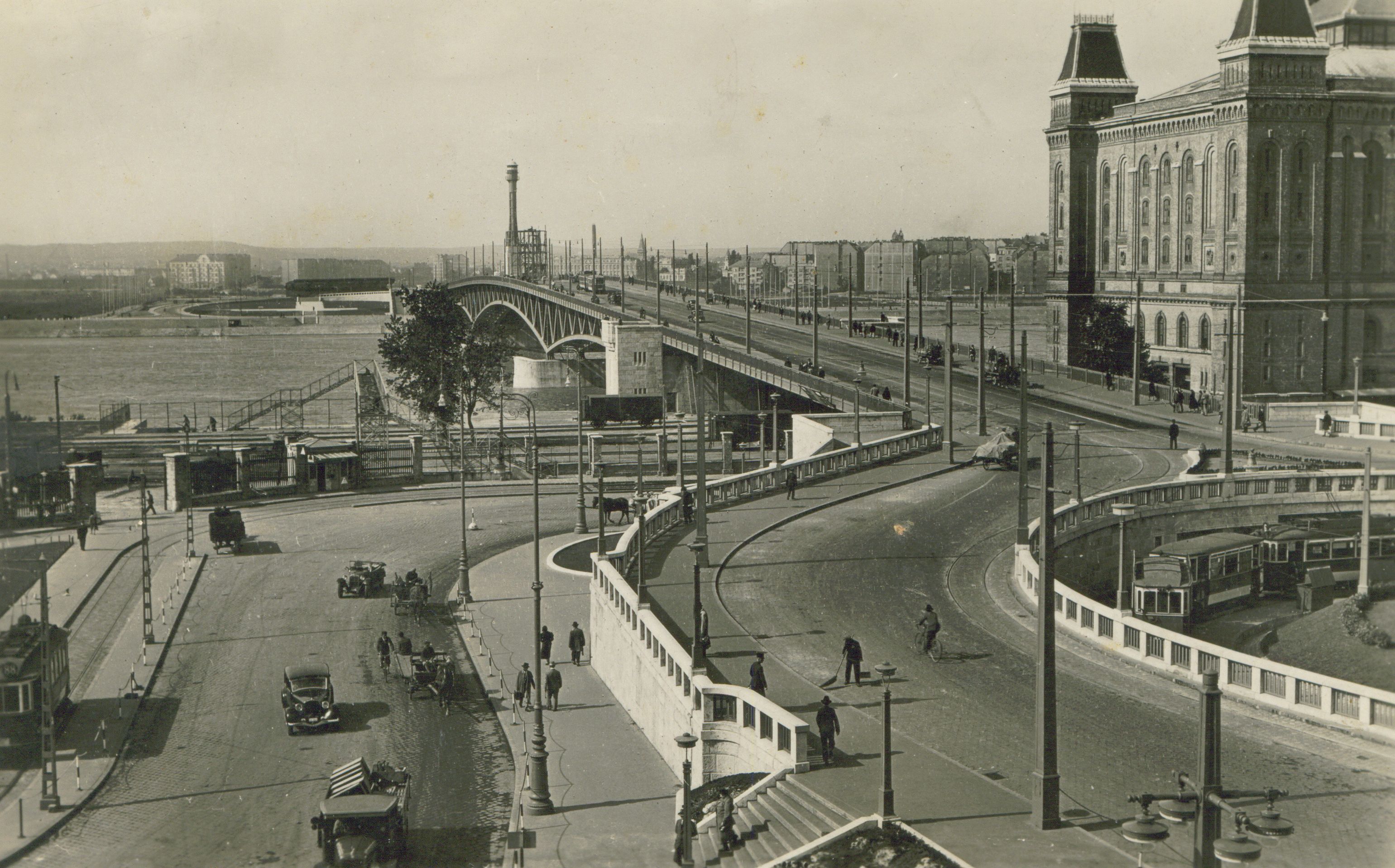 The Danube-bank Freight Station on Boráros Square around 1940 (Photo: Ferencváros Local History Collection)
The Danube-bank Freight Station on Boráros Square around 1940 (Photo: Ferencváros Local History Collection) Terminus of the Csepel suburban railway and the freight station around 1965 (Photo: Fortepan/No.: 178429)
Terminus of the Csepel suburban railway and the freight station around 1965 (Photo: Fortepan/No.: 178429)
The importance of the station dropped from the 1960s onwards. The output of the large factories, especially the steam mills decreased, eventually only a single mill remained on Soroksári Road. There was also no longer a need for such a large rail-based freight distribution centre. Warehouses replaced the tracks in several places, and unused freight wagons increasingly defined the area.
Following the fall of communism, the need for rail freight dropped dramatically in the capital, and Danube-bank Freight Station became obsolete. However, the area became extremely important for another reason. In 1985 the Hungarian and Austrian governments had agreed to submit a joint tender to organise the 1995 World Fair. The idea of co-hosting was a success, as it would have been the first world fair organised by socialist and capitalist countries.
The pavilions of the Budapest exhibition would have primarily stood along the Lágymányos section of the riverbank, but the freight station on Soroksári Road was also to play its part. In the meantime, Vienna withdrew from the tender, but Budapest undertook the event alone, and planning began. The freight station was abandoned in 1992, to allow construction to begin. However, this never happened as Hungary withdrew from the event in 1994. Regardless, the area was ready for a large-scale investment that would replace the tracks.
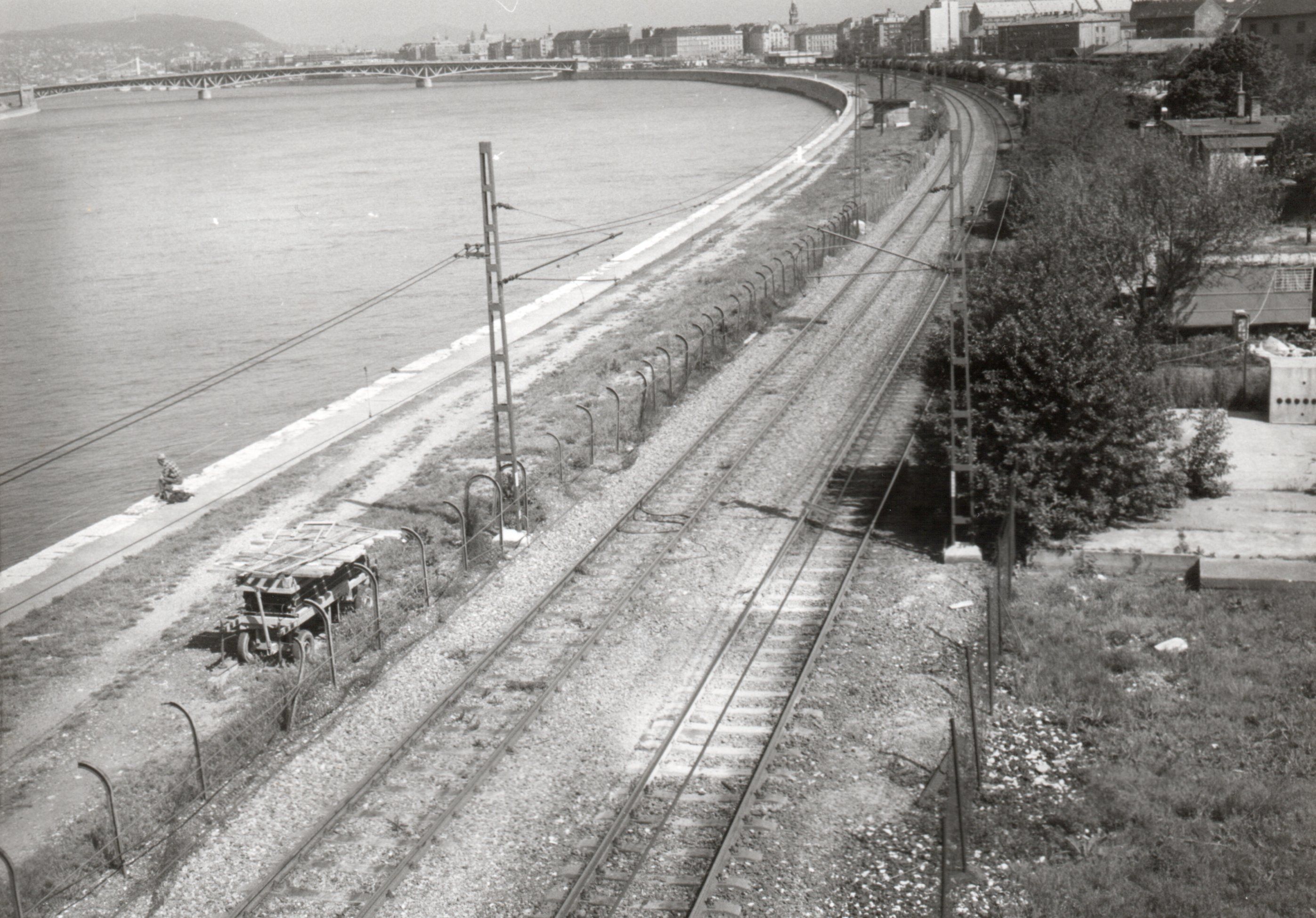 Suburban railway tracks and the buildings of the freight terminus in 1988 Boráros Square and Petőfi bridge in the background
Suburban railway tracks and the buildings of the freight terminus in 1988 Boráros Square and Petőfi bridge in the background
(Photo: Ferencváros Local History Collection)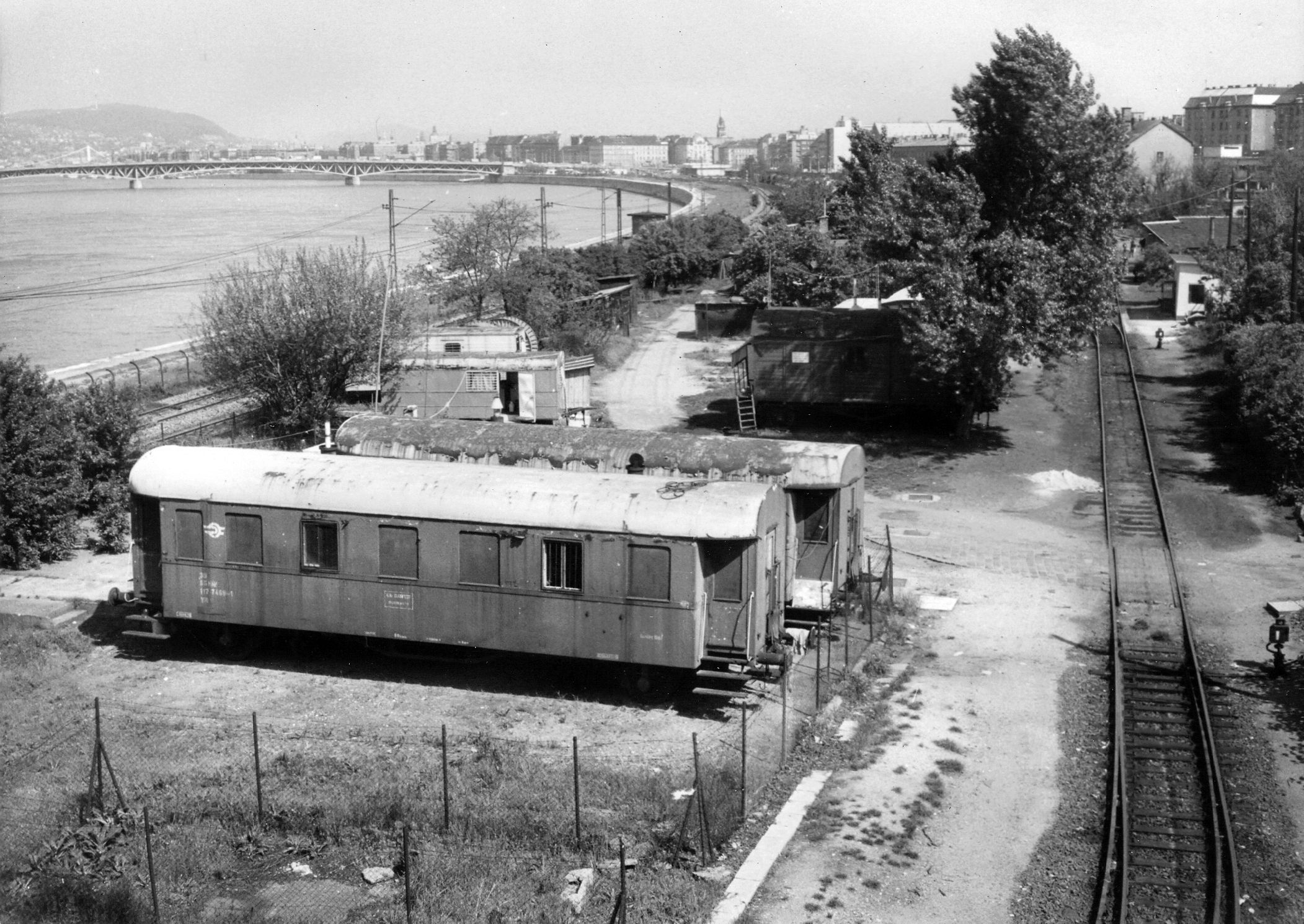 The station in 1988, Boráros Square and Petőfi Bridge in the background (Photo: Ferencváros Local History Collection)
The station in 1988, Boráros Square and Petőfi Bridge in the background (Photo: Ferencváros Local History Collection)
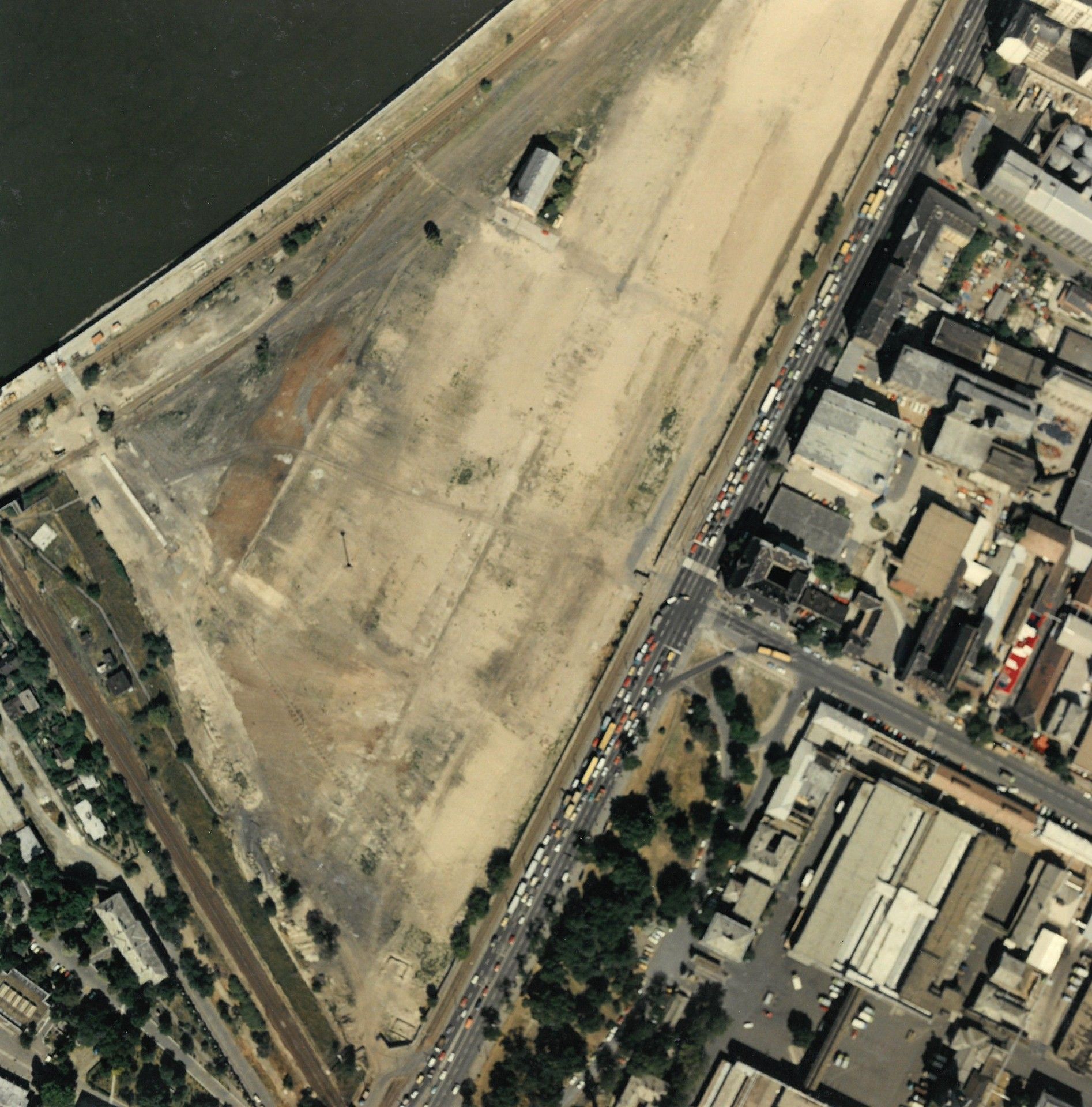 Aerial view of the demolished freight station (from the archives of the Chief Architect of Ferencváros)
Aerial view of the demolished freight station (from the archives of the Chief Architect of Ferencváros)
Several ideas for the utilisation of the area were considered, and the final concept was modified several times. First, an office block was constructed near Boráros Square, and then the National Theatre was given its final home close to Rákóczi bridge (then Lágymányosi Bridge). The theatre opened in 2002 and the Palace of the Arts three years later. The latter has since become a centre for classical music, dance and contemporary fine arts in Hungary.
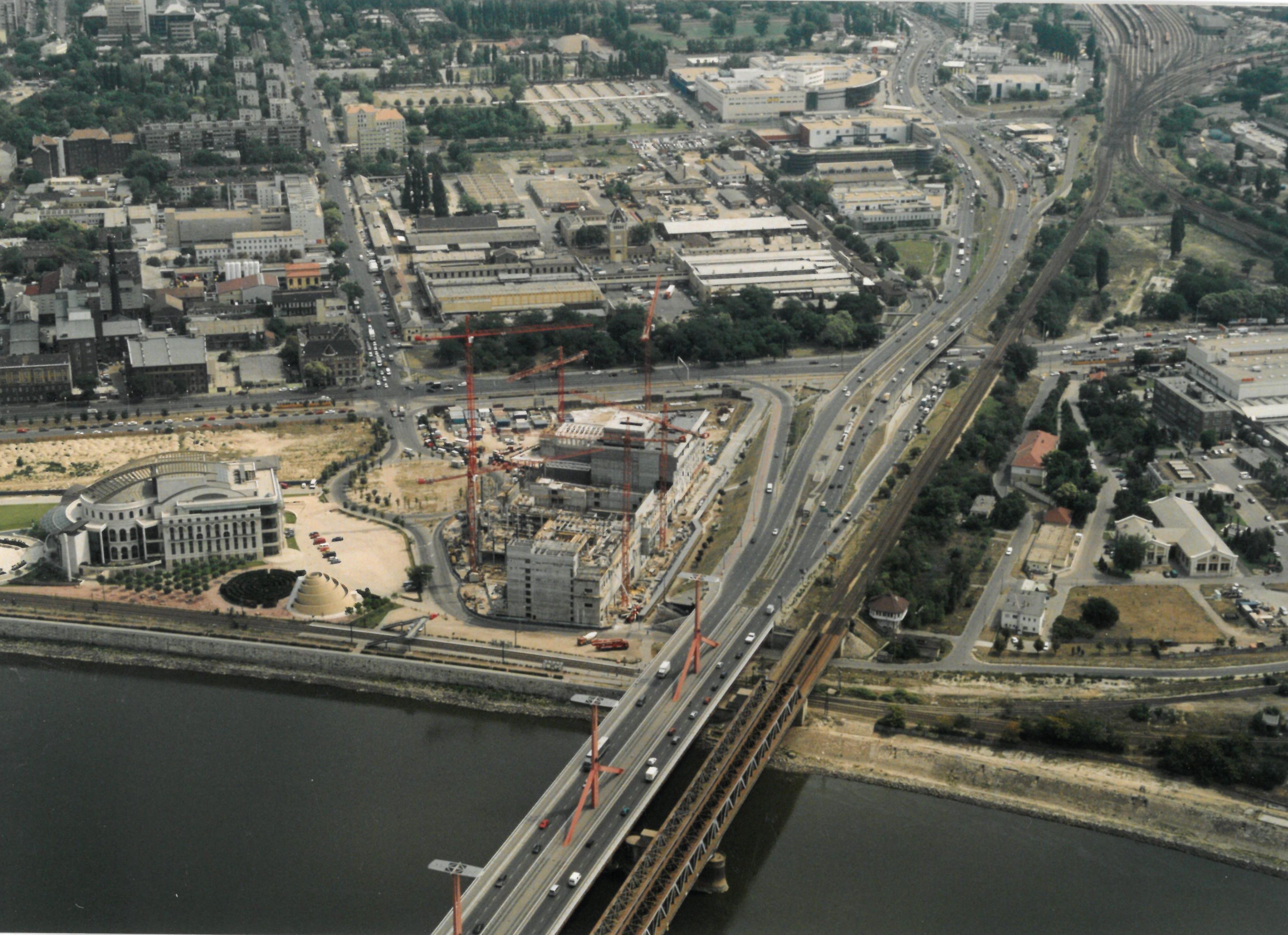 The National Theatre and the Palace of the Arts under construction in 2004 (Source: Archives of the Chief Architect of Ferencváros)
The National Theatre and the Palace of the Arts under construction in 2004 (Source: Archives of the Chief Architect of Ferencváros)
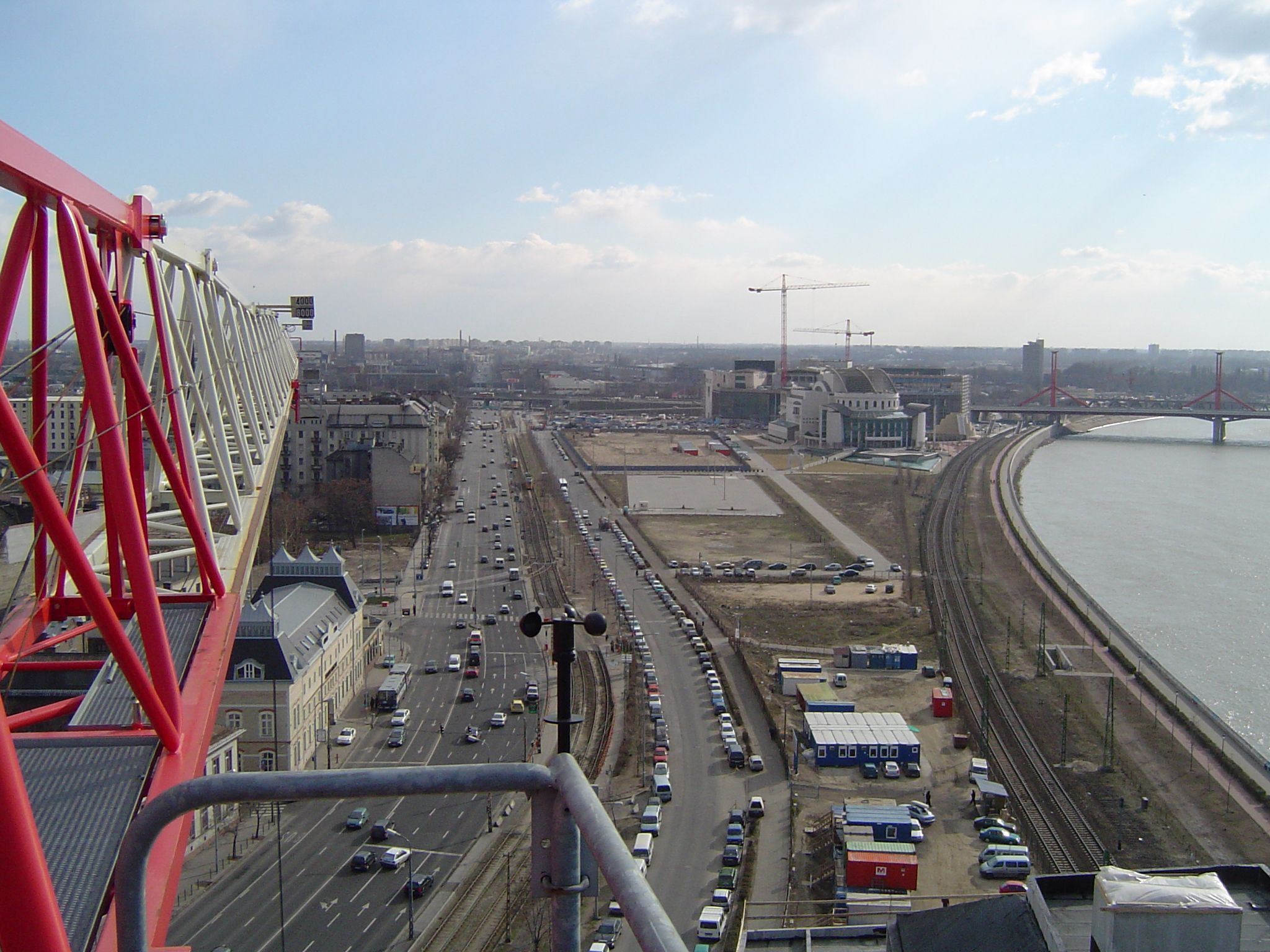 The area of the Millennium City Centre with the National Theater and Palace of the Arts in the background in 2006
The area of the Millennium City Centre with the National Theater and Palace of the Arts in the background in 2006
(Photo: Ferencváros Local History Collection)
Three large residential buildings were built along Soroksári Road up to Haller Street. Office blocks continued the line. Today the National Theatre is connected with Boráros Square by a charming promenade, including a playground, a running track and a cycle path, alongside several unique landscaping solutions.
The area is still taking shape. The new private hospital at Haller Street is close to completion, as is the final office building beside the national theatre. Several questions remain unanswered, mainly regarding transportation. However, one thing is certain: a neglected area, incapable of fulfilling its original tasks has been revitalised through the last two decades. Whether these buildings are loved or not, only time will tell what role the Millennium City Centre will play in the life of Budapest.
Cover photo: The National Theatre and Palace of the Arts in 2004 (Source: Archives of the Chief Architect of Ferencváros)

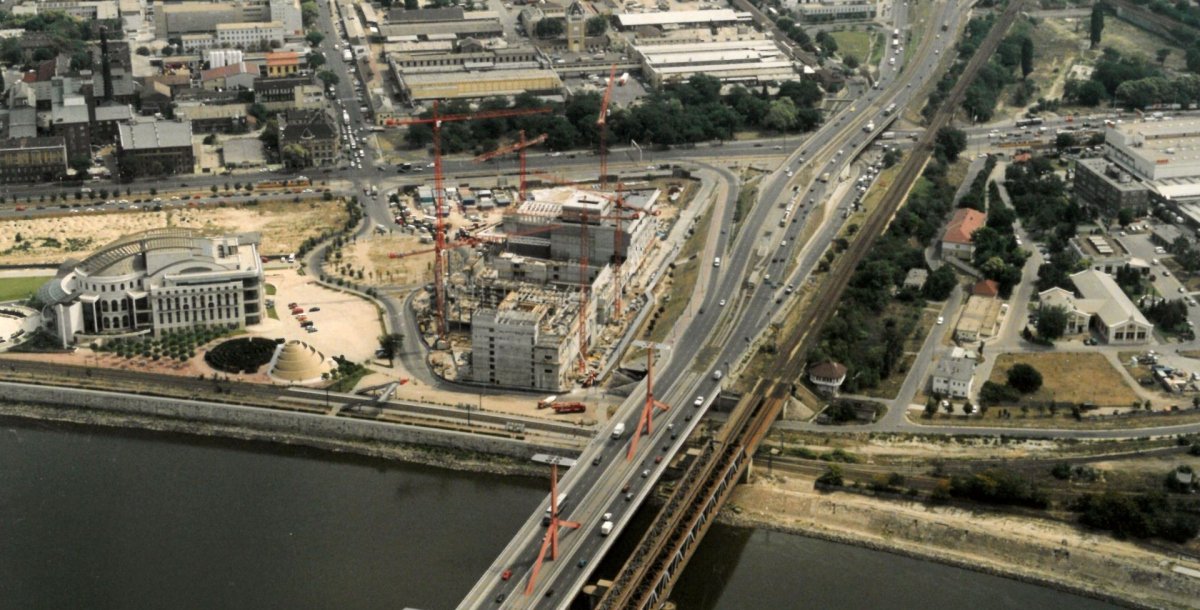



































Hozzászólások
Log in or register to comment!
Login Registration